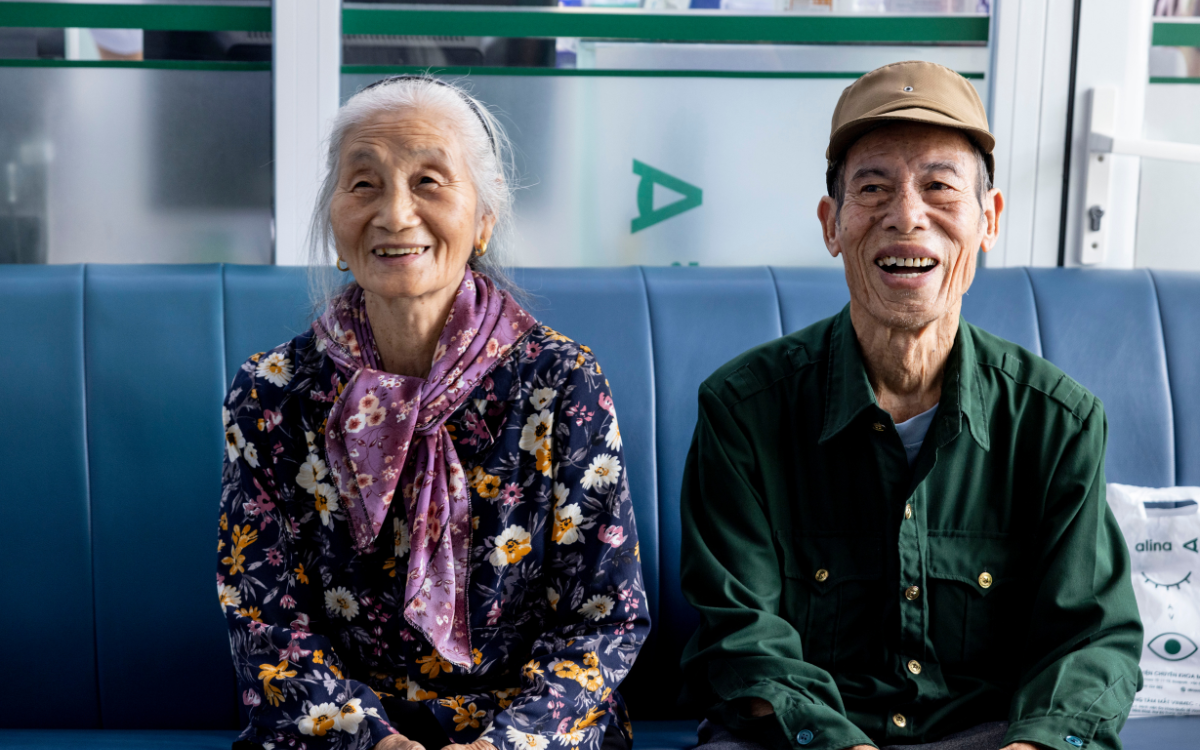
Protecting and restoring vision in older age
Today, an estimated 73 percent of people living with avoidable vision impairment are older people – amounting to 800 million people globally.
As the world's population ages, this figure will rise to 1.28 billion by 2050 unless urgent action is taken.
A new report released on World Sight Day by The Fred Hollows Foundation and the International Federation of Ageing (IFA) calls for close collaboration between the eye health and ageing sectors to protect and restore vision in older age.
The importance of vision in healthy ageing
The report Connecting Healthy Ageing and Vision provides an overview of the eye health of older people today. It proposes key actions needed within and beyond the UN Decade of Healthy Ageing (2021-2030) to ensure that older people's eye health and quality of life are preserved.
Dr Vânia de la Fuente-Núñez, Healthy Ageing Senior Advisor at The Fred Hollows Foundation, said vision loss affects the physical and mental health of older people and their ability to function in the community.
"Losing sight means facing an increased risk of mortality, cognitive decline, and depression, and, where environments are not accessible, often means losing your independence, confining many older people to their home, and increasing social isolation and loneliness in later life.”
While many eye conditions become more prevalent as people age, blindness is not inevitable in later life. It's crucial to recognize vision as an integral component of overall health within the UN Decade of Healthy Ageing, prioritising healthy ageing from research to policy and practice.
We need proactive action to eradicate avoidable vision loss in later life, enabling more older individuals to lead independent lives and continue contributing to their local communities.

Older women bear the burden
Existing inequities in healthcare access and other socioeconomic factors contribute to the increased burden of vision impairment among older people, with a notable impact on older women and those with limited education or lower income levels.
Older women bear a disproportionate burden, accounting for 56 percent of vision loss cases in the second half of life.
Vision impairment and blindness carry significant consequences, impacting not just the affected women but also their families and communities. These individuals often find themselves marginalized in discussions and decision-making processes related to their health and well-being, as well as that of their families.
Unfortunately, older women frequently encounter substantial cultural barriers and compounded forms of discrimination, including ageism and sexism, resulting in unequal access to services and treatment compared to men. This inequality in access exacerbates their vulnerability to vision-related issues.
The repercussions of vision impairment in older age extend far beyond the individual. Caregivers of people with vision loss, usually women and girls, often grapple with the challenging task of balancing their needs with those of older family members experiencing vision loss, which can lead to anxiety and depression and lost opportunities for education or earning a livelihood, resulting in productivity losses and financial hardship for families.


The Foundation's commitment to healthy ageing
The Fred Hollows Foundation is contributing to the UN Decade of Healthy Ageing (2021-2030) through this work, as well as a series of innovative pilot projects in Vietnam, China, Kenya, Ethiopia, and Uganda that are improving access to eye care services and integrated care for older people.
Through its past work, the Foundation has already restored sight to more than 3 million people worldwide, including many older people.
